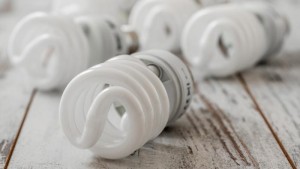What You Should Expect On Your Gas Furnace Inspection by Your Home Inspector

![]() Basic info: will explain about the furnace, what type, age, location, size, etc
Basic info: will explain about the furnace, what type, age, location, size, etc
Best Orange County CA Home Inspector 949-396-9595
Best Home Inspections In Orange County CA
by Littlehelp

![]() Basic info: will explain about the furnace, what type, age, location, size, etc
Basic info: will explain about the furnace, what type, age, location, size, etc

Courtesy of InterNACHI
By Nick Gromicko, Ben Gromicko, and Kenton Shepard
Most people don’t know how easy it is to make their homes run on less energy, and here at InterNACHI, we want to change that. Drastic reductions in heating, cooling and electricity costs can be accomplished through very simple changes, most of which homeowners can do themselves. Of course, for homeowners who want to take advantage of the most up-to-date knowledge and systems in home energy efficiency, InterNACHI energy auditors can perform in-depth testing to find the best energy solutions for your particular home.
Why make your home more energy efficient? Here are a few good reasons:
Federal, state, utility and local jurisdictions’ financial incentives, such as tax breaks, are very advantageous for homeowners in most parts of the U.S.
As much as half of the energy used in homes goes toward heating and cooling. The following are a few ways that energy bills can be reduced through adjustments to the heating and cooling systems:
Demand-type water heaters (tankless or instantaneous) provide hot water only as it is needed. They don’t produce the standby energy losses associated with traditional storage water heaters, which will save on energy costs. Tankless water heaters heat water directly without the use of a storage tank. When a hot water tap is turned on, cold water travels through a pipe into the unit. A gas burner or an electric element heats the water. As a result, demand water heaters deliver a constant supply of hot water. You don’t need to wait for a storage tank to fill up with enough hot water.
The average household dedicates 11% of its energy budget to lighting. Traditional incandescent lights convert approximately only 10% of the energy they consume into light, while the rest becomes heat. The use of new lighting technologies, such as light-emitting diodes (LEDs) and compact fluorescent lamps (CFLs), can reduce the energy use required by lighting by 50% to 75%. Advances in lighting controls offer further energy savings by reducing the amount of time that lights are on but not being used. Here are some facts about CFLs and LEDs:
Sealing and insulating your home is one of the most cost-effective ways to make a home more comfortable and energy-efficient, and you can do it yourself. A tightly sealed home can improve comfort and indoor air quality while reducing utility bills. An InterNACHI energy auditor can assess leakage in the building envelope and recommend fixes that will dramatically increase comfort and energy savings.
The following are some common places where leakage may occur:
Because hot air rises, air leaks are most likely to occur in the attic. Homeowners can perform a variety of repairs and maintenance to their attics that save them money on cooling and heating, such as:
The following systems can be installed to conserve water usage in homes:
Appliances and electronics account for about 20% of household energy bills in a typical U.S. home. The following are tips that will reduce the required energy of electronics and appliances:
Daylighting is the practice of using natural light to illuminate the home’s interior. It can be achieved using the following approaches:
About one-third of the home’s total heat loss usually occurs through windows and doors. The following are ways to reduce energy lost through windows and doors:
An enormous amount of energy is wasted while cooking. The following recommendations and statistics illustrate less wasteful ways of cooking:
Homeowners who take the initiative to make these changes usually discover that the energy savings are more than worth the effort. InterNACHI home inspectors can make this process much easier because they can perform a more comprehensive assessment of energy-savings potential than the average homeowner can.

We at Coastal Property Inspections challenge the status quo! Our goal is to provide the real estate community, home buyers and sellers the best and most comprehensive home inspection services in the industry. We go above and beyond the typical inspection by including infrared imaging, drone inspections, a fast 24 report turn around with a high level of passion, communication, knowledge and engagement with our clients. You’ll feel content when you’ve had your home inspection with Coastal Property Inspections.
When buying a new home, home buyers want to make make sure they are not buying a money pit, so hiring an inspector who is thorough, detail oriented and a good communicator is vital. Chris Knappett, home inspector in Laguna Niguel with Coastal Property Inspections, is just that inspector. He has been certified by InterNACHI (International Association of Certified Home Inspectors), so he is properly equipped to do your inspection. Many inspectors are not certified here in CA, so beware!
Chris’s vast knowledge and understanding about homes along with his ability to calmly discuss the results of his findings with you, make him a great person for the job. Plus, you will walk away with a summary list of items you may need to repair on the spot. He’s also available to discuss any questions you may have about your inspection and is only a call away. 949-396-9595